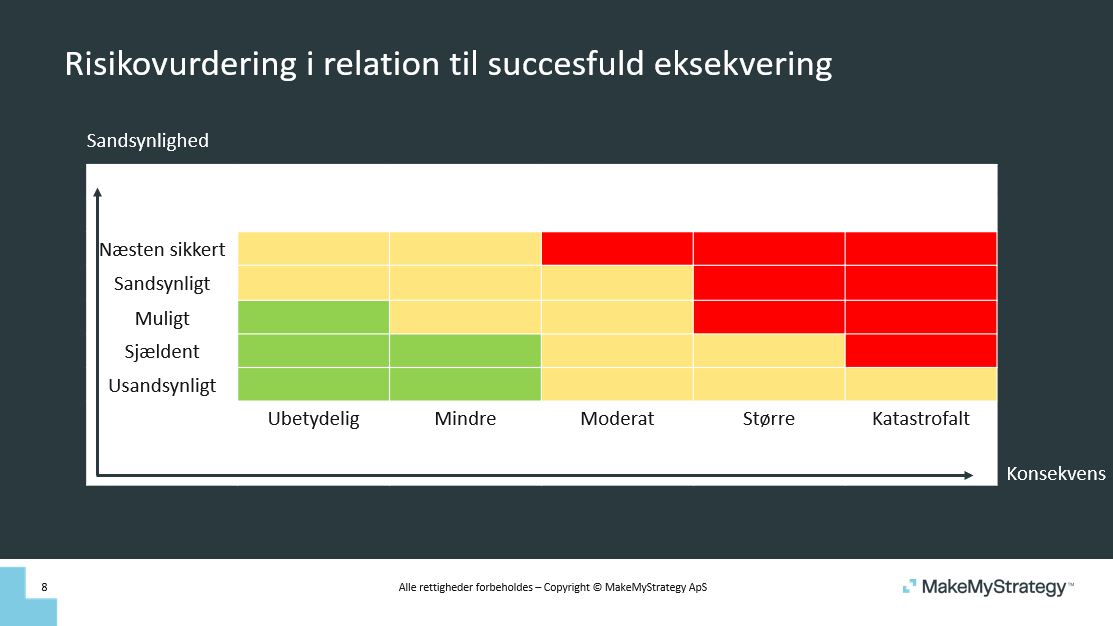
Dansk

A risk analysis is an assessment of the likelihood of something happening and what the consequences are if it does. In other words, which risks are most likely to happen and which risks have the potential to cause the most damage.
The purpose of a risk analysis is to 1) prevent the risk from occurring and/or 2) create a plan to mitigate the risk so that the consequences are limited.
You can use risk analysis in several areas, e.g. in relation to projects, foundations for decisions, strategy development, implementation, new products, new markets, etc. In MakeMyStrategy™ you will naturally be introduced to several types of risk analysis during your strategy work.
Step 1
Identify risks - what could potentially go wrong in the project/strategy development/implementation/execution?
Step 2
Assess the likelihood, impact and prioritize which risks to address (see illustration below)
Step 3
Create a plan to manage the prioritized risks.
The options are:
1. measures to ensure that risks can be avoided or minimized.
2. measures to reduce the consequences if the given risk occurs.
3.Share risk with 3rd party e.g. insurance, rent rather than own.
4.Accept and live with the given risk

Now the focus is on the ball
Peter Hartvig
Owner and CEO